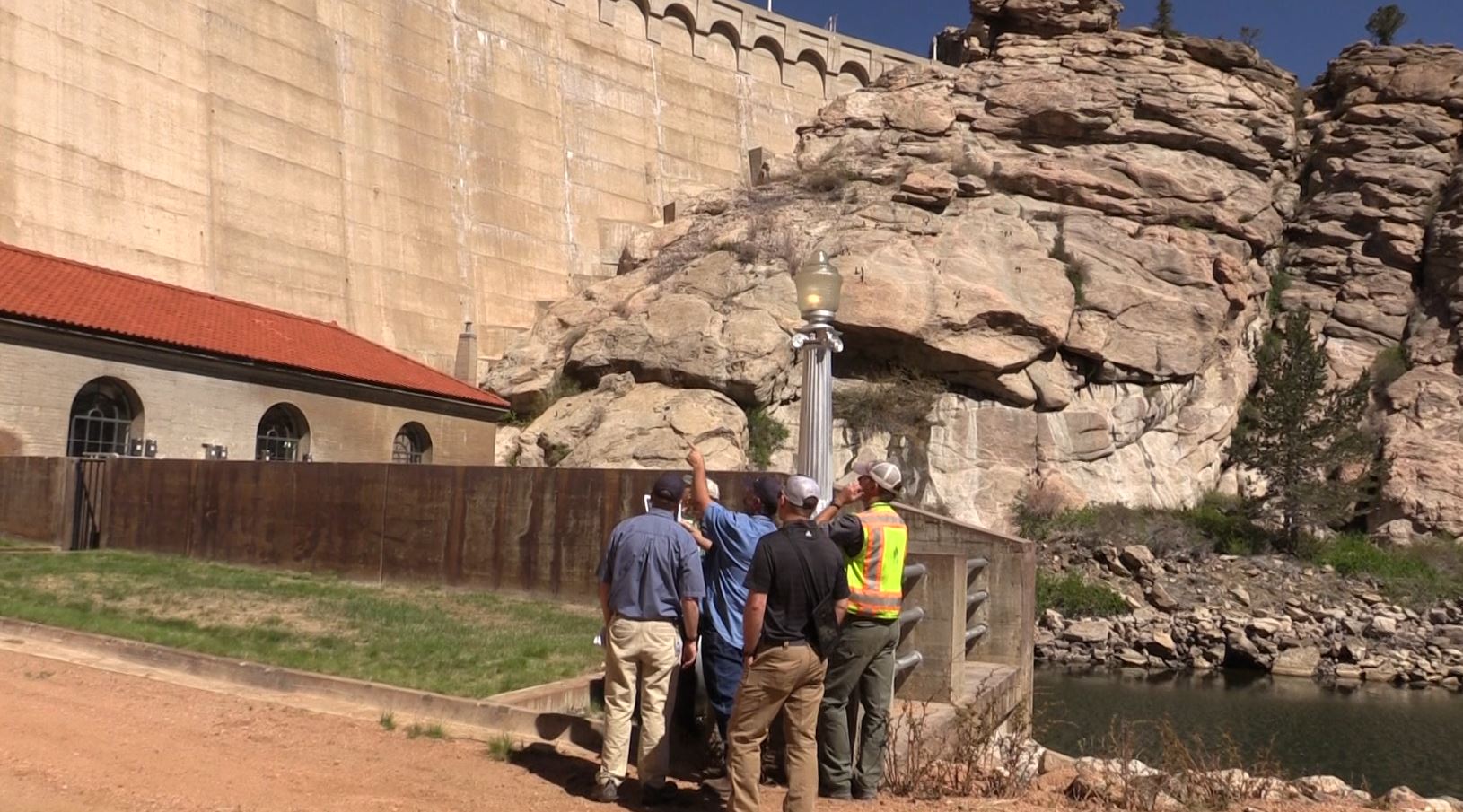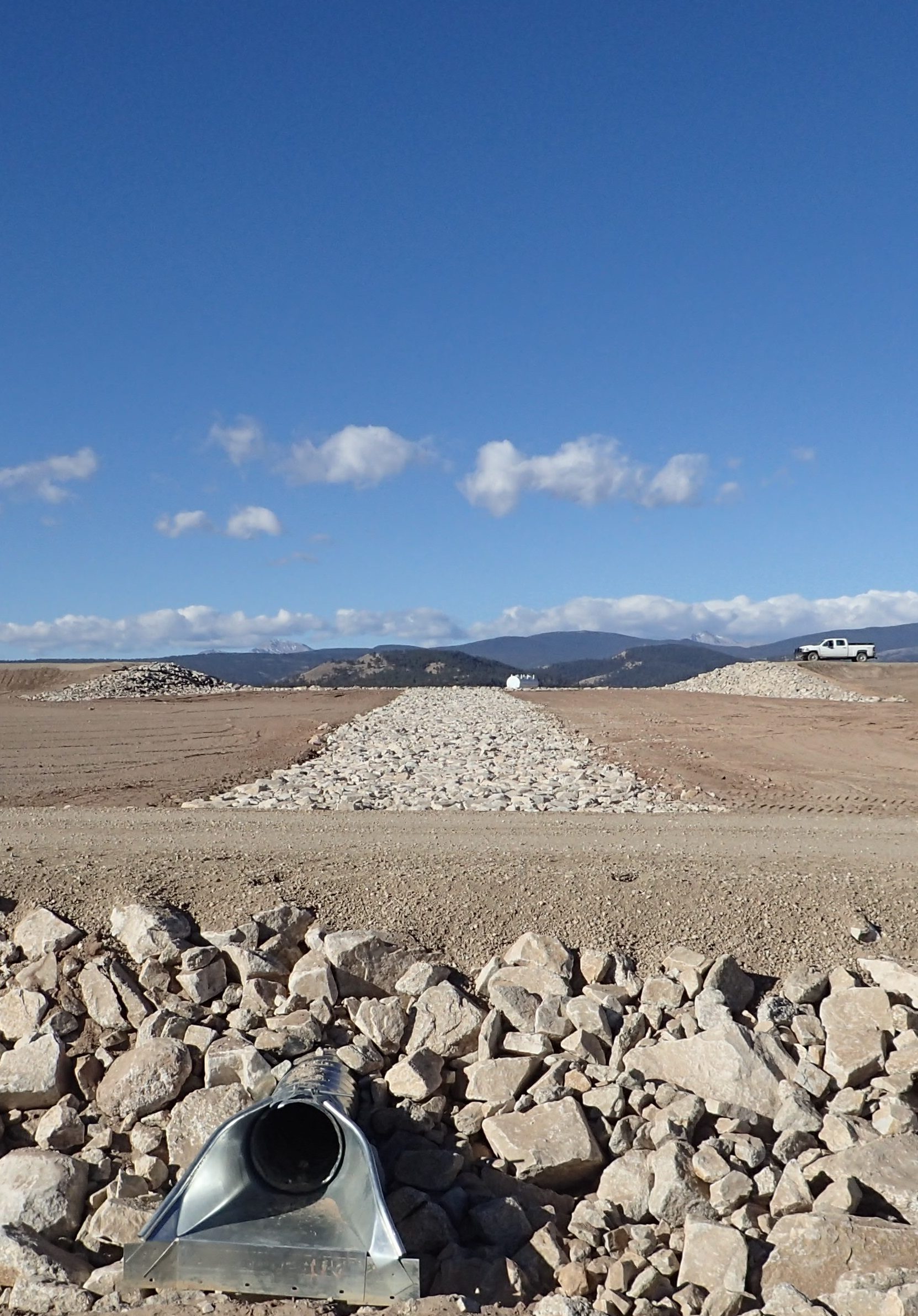
How safe are Denver Water’s dams?
With a full reservoir, damaged spillway and looming storms, the crisis at Oroville Dam has nearly 200,000 potential evacuees in California on edge and many Colorado communities wondering about the conditions of dams here at home.
Six dam safety engineers are responsible for the integrity of 20 dams in Denver Water’s system, including Casey Dick. “We continuously monitor, inspect and rehabilitate our dams to mitigate the potential for dam safety incidents,” he said. “We conduct our own internal evaluations on each of our dams annually, as well as the required state and federal inspections.”
The inspections certify that these engineering marvels are safe and functioning properly. Watch “Eleven Mile Dam passes annual safety checkup” to see Denver Water’s engineers and dam caretakers inspect the dam with state safety inspectors in May 2016.
“A big advantage at Denver Water is our caretakers, who actually live at or near our major dams,” said Dick. “Caretakers know the facilities better than anyone and check the dams daily to look for any new or changing conditions on the dam — enabling us to proactively address concerns before they become an issue.”
When an issue is identified, Dick said Denver Water responds immediately to repair or rehabilitate the dam.
Here are some recent dam safety projects:
- Dillon Reservoir — In 2014, Denver Water upgraded Dillon Dam’s outlet works facility, which houses the system that controls the flow of water from Dillon Reservoir into the Blue River.
- Antero Reservoir — Denver Water is in the final stages of a multiyear, $20 million rehabilitation project on the 100-year-old dam and spillway that required fully draining the reservoir in 2015.
- Meadow Creek Reservoir — In 2015 and 2016, Denver Water replaced two valves at Meadow Creek while water in the reservoir was lowered for inspection.
- Strontia Springs Reservoir — In 2016, an elite team of divers fixed a critical emergency reservoir drain system on the dam, 200 feet below the surface.
- High Line Canal diversion dam — After deteriorating in 2015, the wooden diversion structure located about 1.5 miles up Waterton Canyon was replaced in 2016.
All of Denver Water’s high-hazard dams have the top rating of “satisfactory” by the State Engineer’s Office with the exception of Antero Reservoir, which is expected to receive a satisfactory rating upon completion of the current rehabilitation project. Dams are classified as high-hazard if a failure could put lives, the environment and property at risk.
There are 14 high-hazard dams in Denver Water’s system, each with an emergency action plan to clearly identify communication lines for communities and emergency responders that could be impacted by a large release of water from the dam. The plans ensure that community officials and emergency responders receive real-time conditions and projections so they can make informed and timely decisions, such as when to enact evacuation procedures.
To prepare for worst-case scenarios, Denver Water’s emergency management team conducts training exercises with communities downstream of some of its high-hazard dams. Watch "When reservoirs go wild" to see these full-scale emergency dam exercises in action at Gross Reservoir in 2015 and Dillon Reservoir in 2014.
“Denver Water has an extremely proactive approach to reducing the risk of dam safety issues,” said Dick. “But, as we’re seeing in California, you never know what Mother Nature is going to throw your way, which is why our emergency response plans are an equally important part of having a safe system.”


